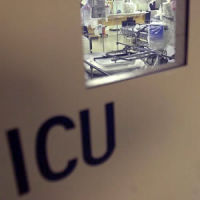A multi-centre observational study was conducted to report the duration of resuscitation for patients after an in-hospital cardiac arrest as well as to examine the relationship between resuscitation and neurologically intact survival to discharge.
See Also: ESA2016: Death by Resuscitation?
For the purpose of the study, the authors collated data from 40,563 non-survivors of in-hospital cardiac arrest in 573 hospitals. Patients were categorised on the basis of their chance of neurologically intact survival to hospital discharge. The categories were determined on the basis of the "Good Outcome Following Attempted Resuscitation" (GO-FAR) score which considers 13 pre-cardiac-arrest characteristics.
Findings show that the median duration of resuscitation effort was 19 min. The researchers found a correlation between median resuscitation duration and predicted chance of neurologically-intact survival. Those who received resuscitation for 7 min longer than the median had an above-average chance of neurologically-intact survival as compared to those who received a 16 min resuscitation.
The study also showed a wide variation in resuscitation practices. Approximately 40.4 percent of patients who had a very low chance of survival were resuscitated for longer than 19 min while 31.9 percent patients who had an above-average chance of survival were resuscitated for shorter than the median duration. These findings suggest that futile and prolonged resuscitation is being performed on a large number of patients while there are patients who are being withdrawn from life-saving resuscitation too soon.
Factors such as age, malignancy and existing heart failure were found to be correlated with below-median resuscitation in patients with above-average chance of neurologically-intact survival while factors such as shockable rhythm correlated with above-median resuscitation in patients with a very low chance of neurologically-intact survival. It thus appears that physicians may be placing emphasis on certain attributes and the decisions they are making may not be in the patient's best interest.
While the GO-FAR score may be a useful tool but it remains to be seen whether the model is effective enough to help physicians make accurate decisions regarding resuscitation. Patient preferences and concerns may play a role in resuscitation decisions and family members could also have an impact.
Overall, it is important to note that there are neurologically-intact survivors that are dying due to premature decisions to stop resuscitation. Using tools such as the GO-FAR score may be useful in making such decisions. Nevertheless, physicians need to look at the broader picture and consider all important factors before deciding whether to stop or continue resuscitation.
Source: Resuscitation
Image Credit: Wikimedia Commons
Latest Articles
resuscitation, cardiac arrest, neurologically-intact survival
In-Hospital Cardiac Arrests and Resuscitation



























